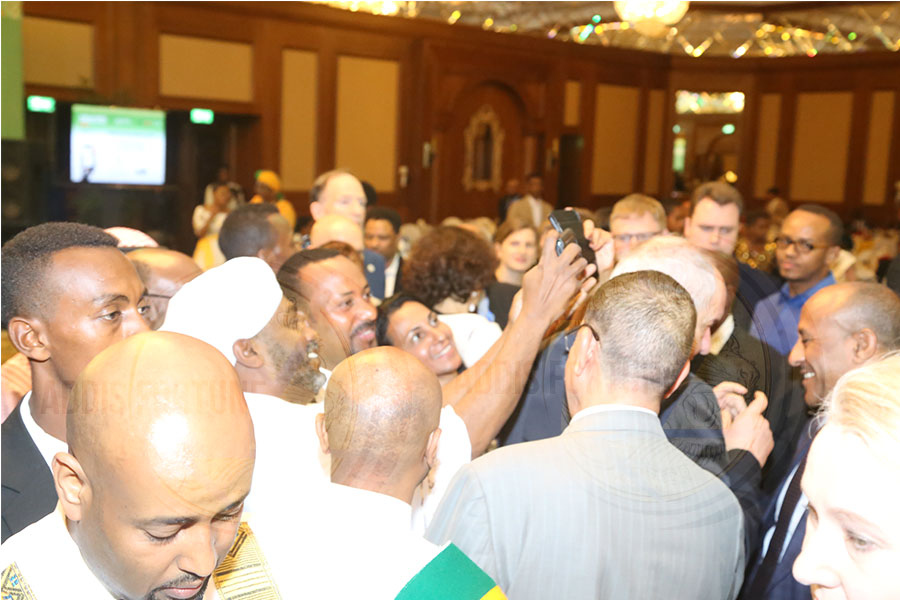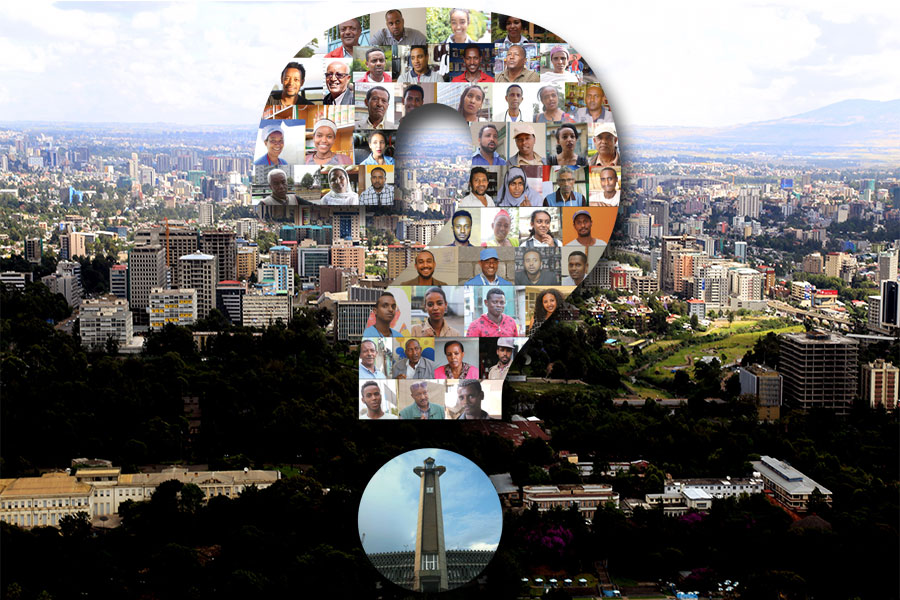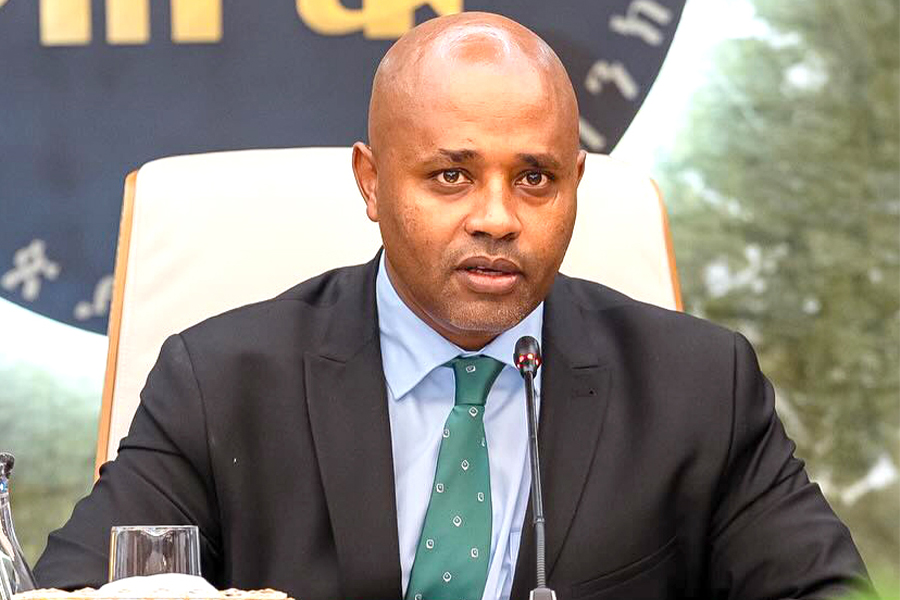
Fortune News | Jan 19,2019
The 92nd Academy Awards is nearing, and Ethiopia’s submission for the Best International Feature Film, formerly known as Best Foreign Language Film, is one of its glitzier films released this year, Running Against the Wind.
The Best International Feature Film category is no joke. The films nominated in it are often far superior to the Best Picture nominees in any given year. Compare last year’s entertaining Green Book, which was actually a better movie than it was given credit for, with Alfonso Cuaron’s modern classic Roma. Take 2017’s Best Picture winner The Shape of Water, a great film, and compare it to the Chilean heartbreaker A Fantastic Woman, an even greater cinematic achievement.
Running Against the Wind now finds itself in an incredibly competitive category. Indeed, it would have a better chance competing in the Best Picture category, which takes stock of politics more than it does artistic merit.
The film is about two childhood friends that dream big, and spend the rest of their lives chasing their dreams. Abdi (Ashenafi Nigussu) hopes to one day become a long-distance runner; and Solomon (Mikias Wolde), a professional photographer.
They part ways earlier in childhood when Solomon runs away from his home in a small town in the Oromia Regional State and makes his way to Addis Abeba. The capital is too cold and indifferent for an innocent soul such as his, so he ends up on the street. Abdi stays back in the town, becomes an amateur athlete and gets an opportunity to train in Addis Abeba. They finally cross paths once in the city, but the roughness of the streets and the complexity of success threatens to break their friendship once again.
The film has a fantastic concept, especially when it comes to Solomon’s plotline. Too many children enter the city, usually due to economic circumstances, and end up on the streets. They do not know where their next meal is going to come from, so they steal to make a living. They do not have shelters to sleep in, so they use hallucinogens not just to keep themselves warm but to protect against the harsh reality of their lives. It is no life for an adult, let alone for children, and yet they survive.
Neither the government nor civil society has paid sufficient heed to the plight of these children, while every depiction of street children in local films and TV shows have at best been pathetic. It is about time that a film such as this came onto the scene to portray the vicious lifestyle that these children have to contend with daily.
For this, the film deserves praise. Unfortunately, that is about all that is good about the movie. It could have been Ethiopia’s City of God, depicting the brutal reality of the streets through the eyes of a child who comes from a rural area and grows into adulthood on the unforgiving streets of Addis Abeba.
Instead, the film tries to tell two stories at ones - Solomon’s life on the streets and Abdi’s ambitions of becoming an athlete. The result is a jumbled up plot with hurried pacing, forced conflicts and a poorly explored theme. Either Abdi’s storyline should have been cut or the film should have had a longer runtime.
This is especially unfortunate given that the filmmakers had the resources to tell a great story. The cinematography is polished and the production design is impressive for an Ethiopian movie. In the right hands, the resources and the networks the filmmakers of this movie had at hand could have been used to make a much more complex and engrossing movie.
The worst thing about the film is the third act, which concludes in typical action movie fashion where the two protagonists have to fight their way through a couple of gangsters. There is nothing more pathetic than a movie that attempts to resolve conflict through fistfights. It is the most obvious sign of lazy writing.
However, the actors do their best to redeem the film during some of its lowest points. The best performance comes from Joseph Reta Belay, who plays one of Solomon’s street friends with a complexity and deference that the character deserved. Almost as impressive was Ashenafi, who plays Abdi with the right amount of shyness and naivety.
The worst performance in the movie is by Jan Philipp Weyl, who also happens to be the director. He is hard to miss in the movie. He has himself photographed as if he was the coolest character to grace the screens since Humphrey Bogart. He has no facial expressions whatsoever, like a cat, and smokes a cigarette as stylishly as humanly possible. In that he utters pseudo-profound mumbo jumbo, he is almost a hippie, but a hippie that looks like a male model that takes himself way more seriously than necessary.
Had Weyl put half the effort to improve the film’s script as he did to make himself look cool, this film would have had half a chance at an Oscar nomination.
PUBLISHED ON
Sep 21,2019 [ VOL
20 , NO
1012]

Fortune News | Jan 19,2019

Fortune News | Jan 19,2019

Photo Gallery | 177510 Views | May 06,2019

Photo Gallery | 167718 Views | Apr 26,2019

Photo Gallery | 158383 Views | Oct 06,2021

My Opinion | 136987 Views | Aug 14,2021

Oct 25 , 2025
The regulatory machinery is on overdrive. In only two years, no fewer than 35 new pro...

Oct 18 , 2025
The political establishment, notably the ruling party and its top brass, has become p...

Oct 11 , 2025
Ladislas Farago, a roving Associated Press (AP) correspondent, arrived in Ethiopia in...

Oct 4 , 2025
Eyob Tekalegn (PhD) had been in the Governor's chair for only weeks when, on Septembe...

Oct 25 , 2025 . By YITBAREK GETACHEW
Officials of the Addis Abeba's Education Bureau have embarked on an ambitious experim...

Oct 26 , 2025 . By YITBAREK GETACHEW
The federal government is making a landmark shift in its investment incentive regime...

Oct 26 , 2025 . By NAHOM AYELE
The National Bank of Ethiopia (NBE) is preparing to issue a directive that will funda...

Oct 26 , 2025 . By SURAFEL MULUGETA
A community of booksellers shadowing the Ethiopian National Theatre has been jolted b...